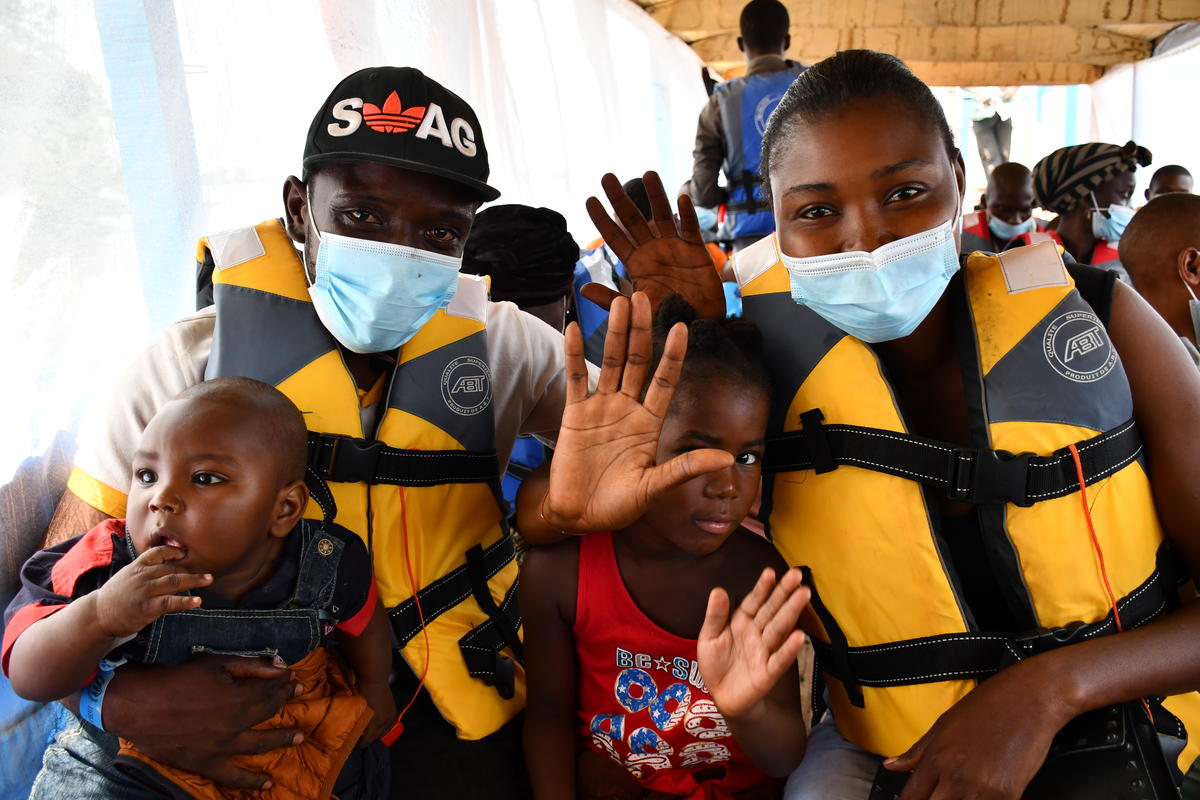UNHCR starts airlift from Namibia to Angola's central highlands
UNHCR starts airlift from Namibia to Angola's central highlands

WINDHOEK, Namibia, Sept 24 (UNHCR) - One hundred and five refugees flew home yesterday to Angola's central highlands on the first airlift from Namibia under UNHCR's voluntary repatriation programme.
The Angolan refugees left Osire camp in central Namibia on Thursday morning, and within hours, were airborne on the inaugural flight to Huambo, the main town in Angola's central highlands that serves as the transport and commercial hub for the agriculturally-rich region.
Huambo was also the stronghold of Jonas Savimbi, leader of the Union for the Total Independence of Angola (UNITA) before his death in 2002 paved the way for peace accords that ended 27 years of civil war in Angola.
Among Thursday's passengers were a mother and her eight children, who were visibly excited at the prospect of their first flight and returning home after years in exile. The woman's husband had returned to Huambo earlier and would meet them at the airport.
"It is very rewarding to see that all our hard work has brought such joy and hope to many refugees," said Victoria Akyeampong, UNHCR's Head of Desk for Southern Africa Operations in Geneva, who witnessed the sendoff from Namibia's Hosea Kutako International Airport.
In his farewell speech to the departing refugees, UNHCR Representative in Namibia, Hesdy G. Rathling, encouraged them to go home without fear to help rebuild their country, and urged the children to continue their studies back in Angola. He also thanked the International Organization for Migration for facilitating the airlift, as well as the Namibian government and airport authorities for offering a 50-percent discount on airport levies.
Osire's camp administer Paulus Haikali was also at the sendoff, sending his best wishes to the refugees on behalf of the Namibian government.
UNHCR hopes to complete the Osire-Huambo leg of the repatriation by the end of November, transporting some 440 refugees home on four flights every week. Airlifts offer the only feasible way back to Huambo as the long distance and poor road conditions make it unsafe to return to the central highlands by other means.
Elsewhere in Angola, land convoys remain the main mode of transport from Namibia. UNHCR has completed repatriation from Namibia to Cunene province in south-western Angola. Convoys to Kuando Kubango province in the south-east are underway, while another land corridor to Huila province north of Cunene is expected to open in October.
So far this year, 2,615 Angolan refugees have returned home from Namibia with UNHCR assistance. The agency expects to repatriate most of the estimated 10,000 Angolan refugees remaining in Namibia's Osire camp and Kasava settlement by the end of the year.
Overall, nearly 24,000 Angolan refugees have returned home this year on UNHCR-organised convoys - from Namibia (2,615), from the Democratic Republic of the Congo (10,834) and from Zambia (10,630).
When the 2002 April peace accords were signed, an estimated 441,000 Angolan refugees were estimated to be living in bordering countries. Since then, some 250,000 have returned home, leaving about 200,000 Angolans in the major asylum countries of the DRC, Zambia, Namibia and the Republic of Congo.








